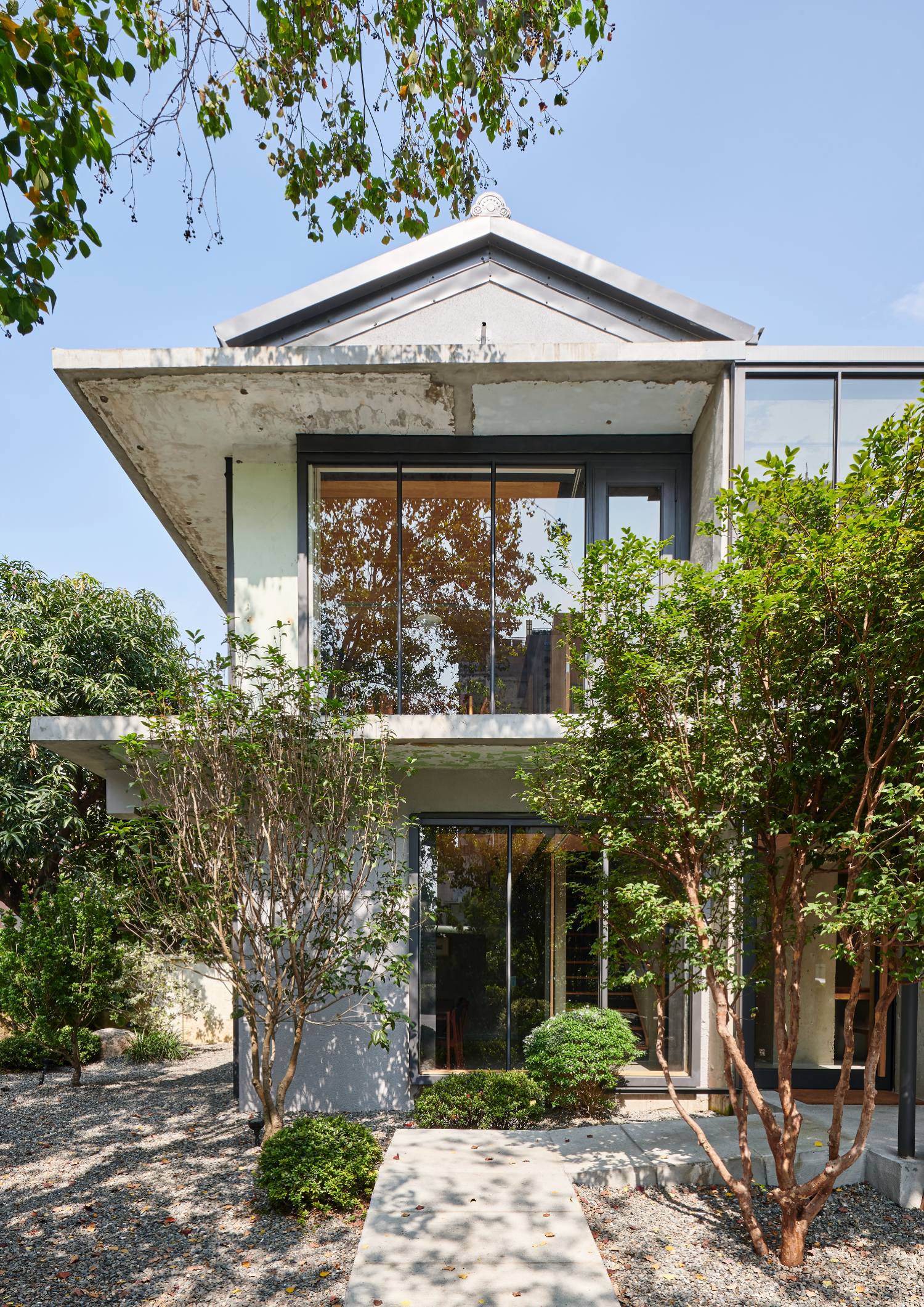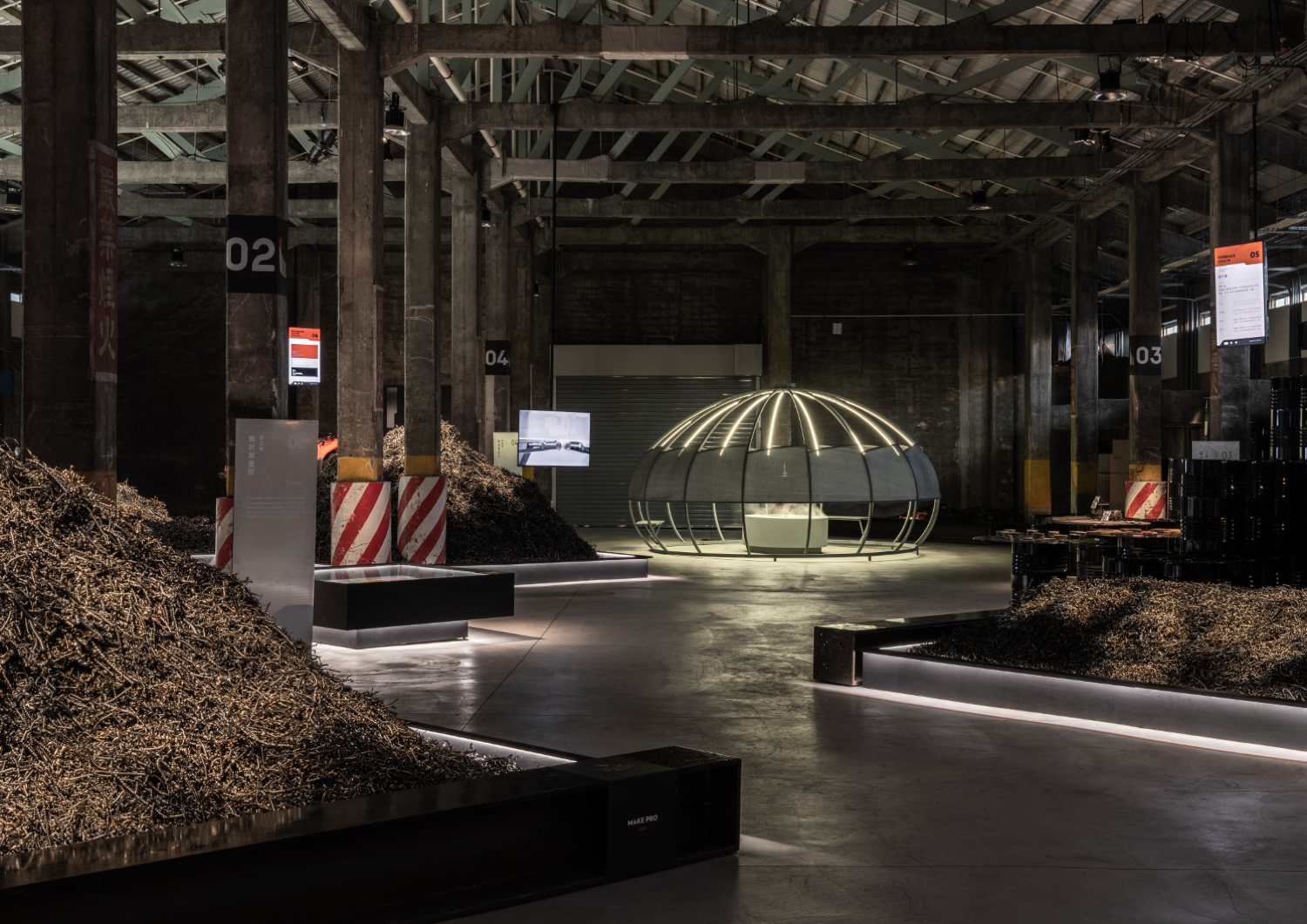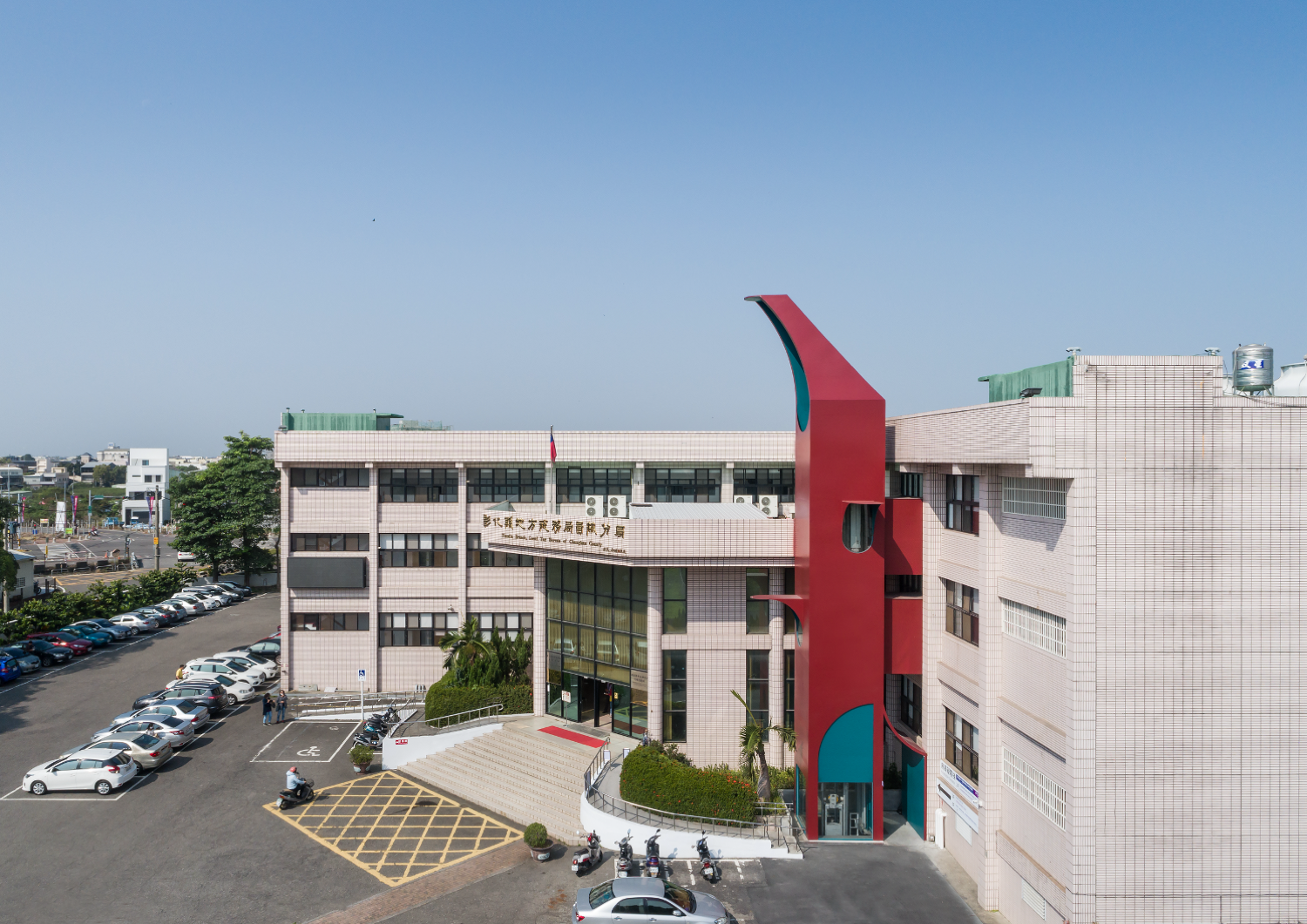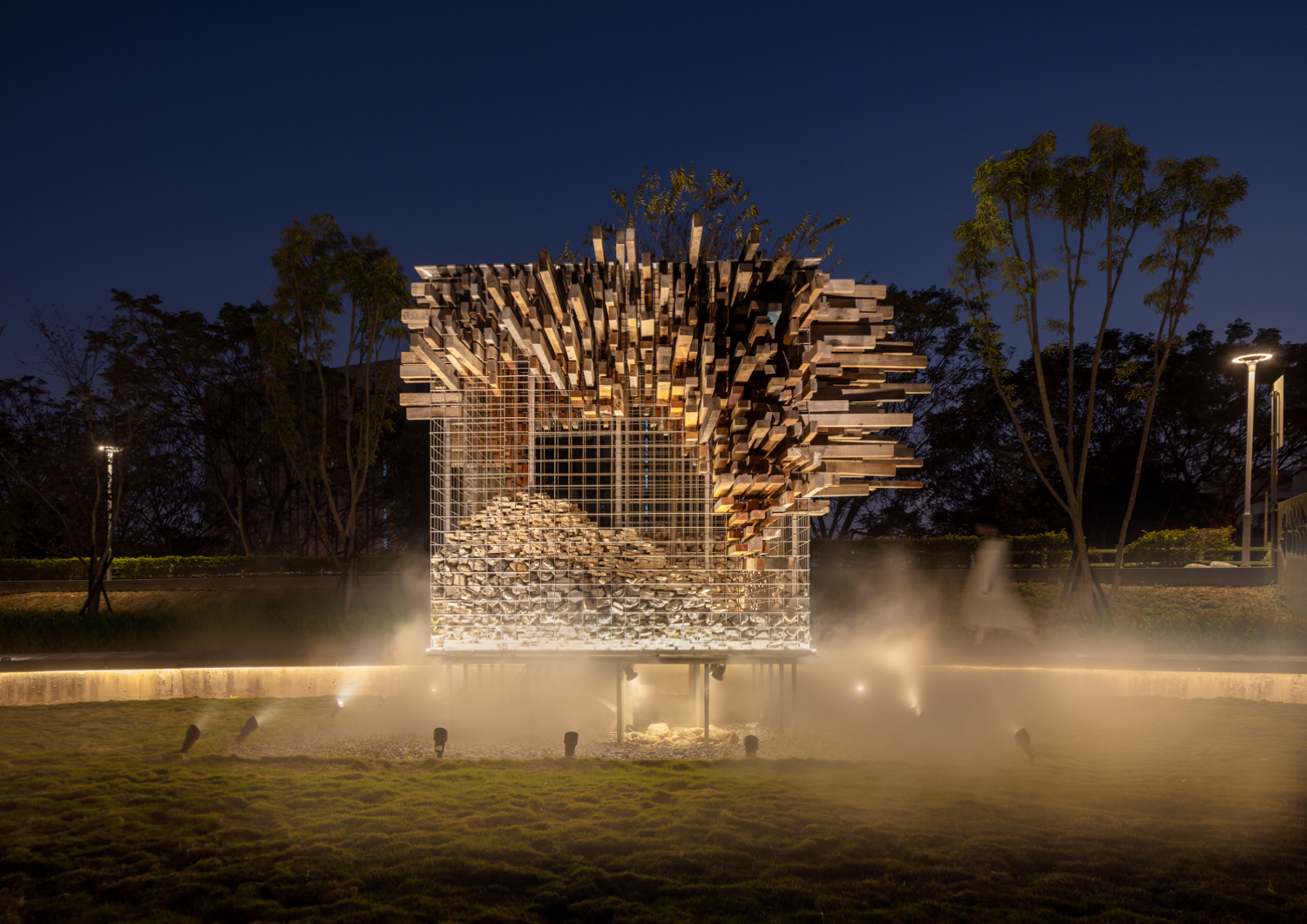Interview Patrick Kasingsing
Images Taiwan Design Week 2024 and Eric Yu
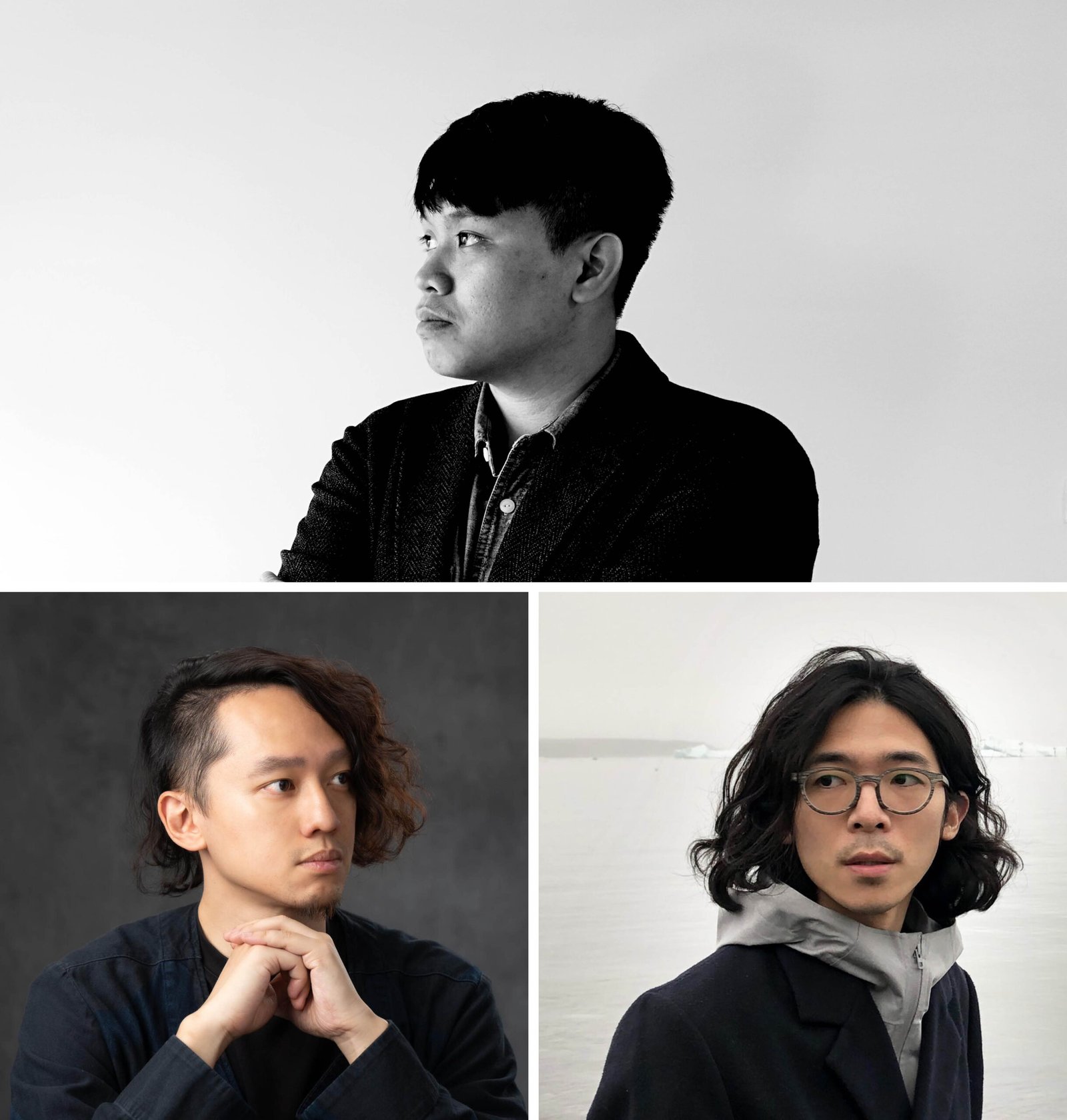

As artificial intelligence (AI) continues dominating conversations in design, Taiwan Design Week 2024 (TDW) dived deeper into exploring its challenges and opportunities. As you curated this edition’s theme, I’m curious: did you uncover any unexpected aspects of AI that you hadn’t considered before, and how do you hope to bring these insights to the many designers and creative professionals attending?
Tsung Yen Hsieh, lead curator TDW: I think what’s interesting is that traditionally, designers in Taiwan—whether in product design or other fields—tend to follow a very structured process. We modify a product, design it, and then get the result. But through the lens of AI, this structure starts to break down. We begin to see that maybe we don’t need such rigid frameworks. AI challenges us to think about whether we really need to create something in the first place or if we need to use as many resources as possible to make it. It pushes us to consider if what we’re designing truly fits with today’s needs.
Eric Yu, co-curator and exhibit designer Atelier SUPERB, TDW: Designers have always had a specific role, but perhaps we’ve become too accustomed to it. AI opens up new possibilities. It allows us to explore different ways of using our skills—not just within design—but to make a broader impact.
Wei-Jhe Lin, co-curator and graphics designer, TDW: AI offers a new perspective, even for those who aren’t necessarily experts. It’s not about replacing human creativity but shifting the focus. When we talk about progress, there’s often the assumption that we need to look abroad for inspiration. However, AI can bring global awareness into our work without leaving our local context.
Tsung Yen Hsieh: Exactly. AI is new and global but is not always accessible to designers or the public. Through this exhibition, we wanted to allow people to see AI in action, not just read about it online. So they can all experience it firsthand and see what it’s capable of.
Eric Yu: Designers have this tendency to focus on their own field, but this exhibition aims to show how AI can open up new possibilities. It’s about improving design and using creative thinking to expand our horizons. AI can inspire designers and anyone looking for new ways to think.
Wei-Jhe Lin: Like Eric said, we stick to our roles in a traditional design atmosphere. But AI invites us to rethink this. It’s not just about making designs anymore but about broadening our skills and having a deeper impact.
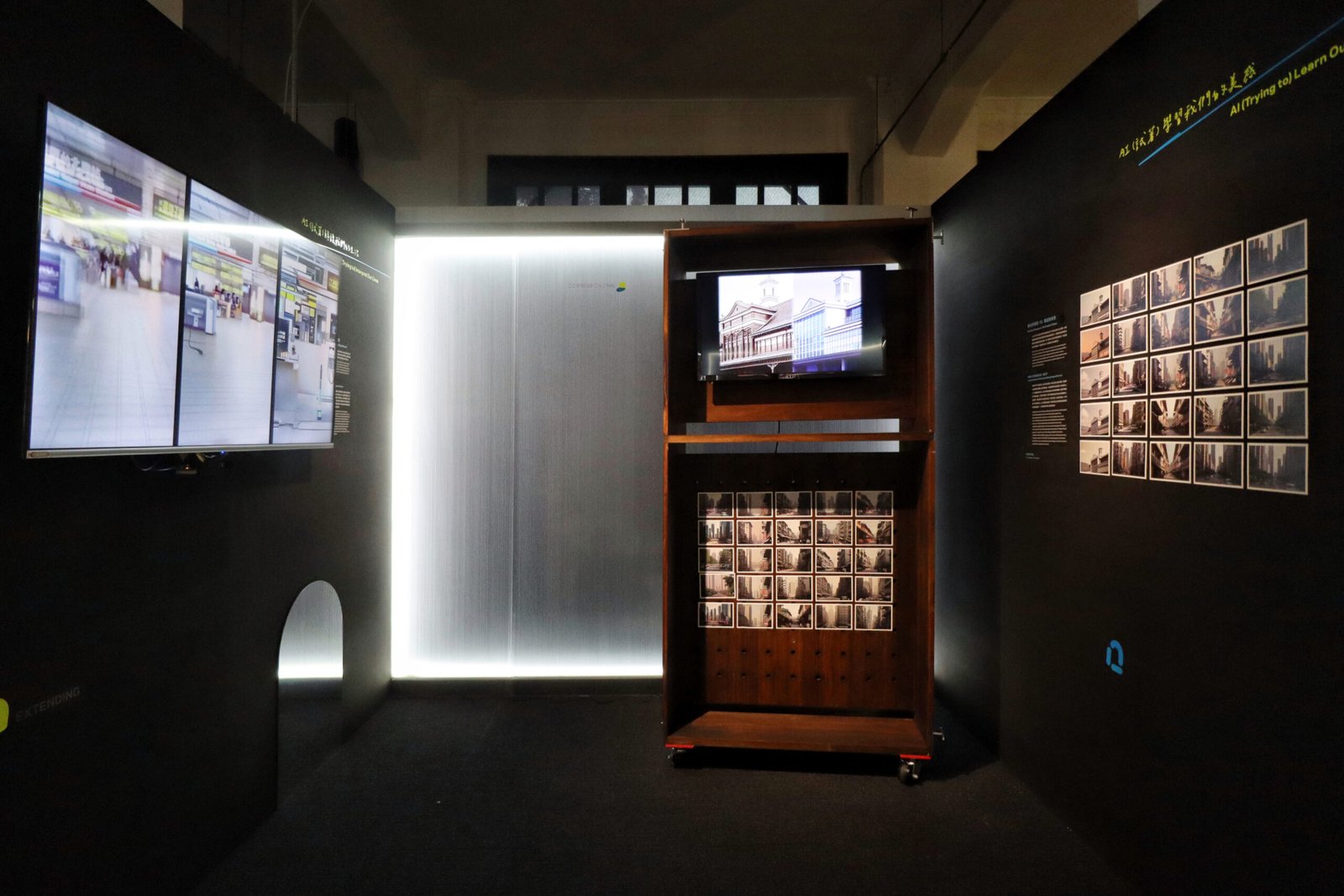

As a designer, I appreciate how the exhibition encourages people to rethink AI. I loved the note that says, “AI is both you and me,” because that’s precisely it. AI isn’t inherently bad, it’s what you make of it. The exhibit does a great job showing how AI can actually help remove bias or preserve heritage. It made me reflect, especially as a heritage advocate in the Philippines. Sometimes, you have to physically experience these possibilities to realize how AI can be a force for good rather than something to fear.
Moving on, since you’re all designers, I’m sure you’ve felt both the potential and the tension when working with AI. How has AI helped your work personally, and are there areas where you think it should stay out of?
Tsung Yen Hsieh: That’s a tough question. When I first thought about AI, I immediately wondered which parts of my job AI could take over. I figured it would save me time, like reducing a 10-hour task to just a few minutes.
Eric Yu: There was even a discussion from architects in Austria about how, in the future, AI could handle entire projects while they just relax and send an email to their clients. It sounds nice, but there’s a loss of control. It’s about finding the balance between efficiency and maintaining our creative autonomy.
Wei-Jhe Lin: Exactly. It’s not about replacing us but about how AI influences our work. We still need to retain our unique style and identity in what we create. There shouldn’t be limits on AI, but it’s crucial to remember that it’s just a tool—it can’t replace human creativity.
Eric Yu: That’s the challenge. AI might speed things up, but creating something new and unique often requires more than following instructions. Designers who use AI without thinking critically will miss the unexpected moments that drive true creativity.
Tsung Yen Hsieh: I’m not tech savvy, but AI can help us speed things up. However, when I look at the work of influencers or creatives online, I see that many of their creations start to look too similar. The issue isn’t AI itself but how it might limit originality if over-relied upon.
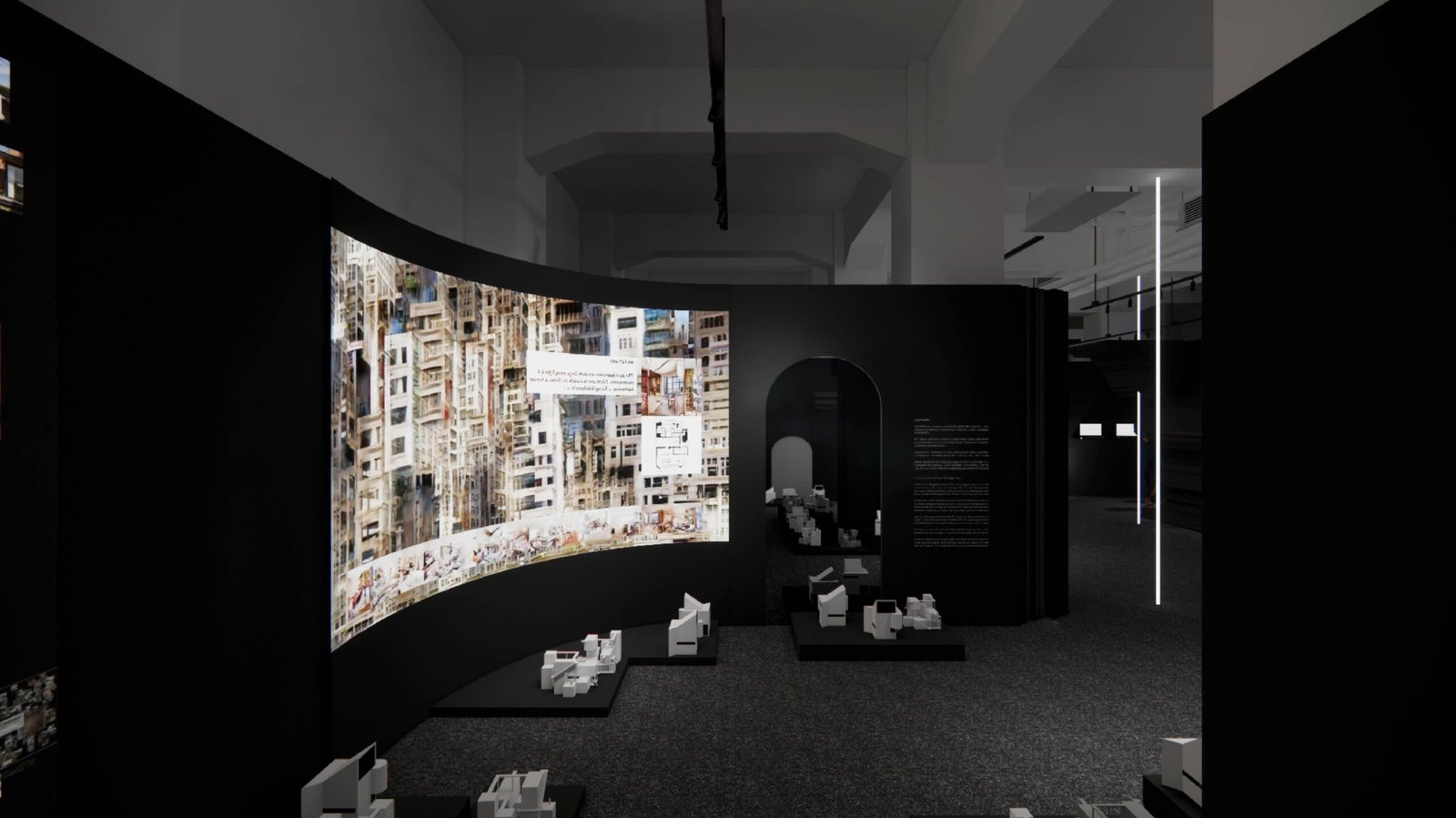

It’s true. AI can churn out grammatically perfect work but lacks the emotion and individuality that make something truly human. That’s the danger; people who don’t yet know what good design or writing looks like might fall into the trap of relying on AI without knowing how to discern quality.
Tsung Yen Hsieh: AI is a tool, not a boss. That’s why I see AI as a tool, not a boss—it should assist, not dictate our creative process. It’s about understanding how to use it to amplify our strengths, not let it dictate the direction. That’s what I really appreciate about this exhibit, as it triggers these thoughts and reminds us of the human side of creativity.
This leads me to another question. We’ve talked about how AI can streamline workflows and assist in conceptualization. Still, doing so can sometimes reduce those moments of serendipity, the unexpected “aha” moments that often lead to groundbreaking ideas. Can something as spontaneous and human as this be introduced into AI, or is it even something we should open to AI?
Tsung Yen Hsieh: I think there’s potential here. I was inspired by a documentary about a famous chess match between a human champion and an AI. The AI won, but after the loss, the human champion took a week to reflect on the game. His takeaway was that humans make mistakes, and this often leads to unexpected answers, uncertainty, or new directions. AI, on the other hand, strives for perfection and lacks the capacity for regret or surprise. This is why human leadership is still a must. AI must be guided to consider the possibility of mistakes and diverse answers as it is in those moments where creativity can flourish.
So, you’re saying the human element should remain at the core?
Eric Yu: Definitely. Especially when it comes to mistakes. Mistakes are crucial. In architecture, we’d love to see unfinished or failed projects.
Isagi Restaurant and Pfizer Spectrum Studio by Atelier SUPERB. Images courtesy of Eric Yu.
Moving on to the next question. Curating an event like Taiwan Design Week is no small feat, especially with a theme as expansive and still somewhat uncharted as AI. I’m curious about your process; how did you select which projects to showcase? Were there guiding principles or non-negotiables for the exhibits that you chose?
Tsung Yen Hsieh: Taiwan Design Week is still growing and evolving as a national event. For example, it’s not yet on the level of Milan Design Week. We wanted to bring diversity to the event, so we looked beyond local projects. We even contacted overseas experiences to see how they could impact Taiwan and places like Taipei.
When selecting projects, it wasn’t a matter of open calls or public submissions. It’s more about fostering conversations with different sectors: corporations, municipalities, and other institutions. We didn’t focus on products; instead, we emphasized the process. It’s about how design can shape society, not just the final product.
Eric Yu: The goal was for people to understand the design experience, not just the outcome. It’s been interesting because we’re doing a design week without the typical “designer” at the core. We hope to carry this strange but exciting concept into future festivals.
So, you had a theme and reached out to participants based on this?
Tsung Yen Hsieh: Exactly. We didn’t have a public selection. We reached out to the people we thought could best align with the theme and who are capable of bringing something fresh to the table.


That makes sense. By reaching out directly, you ensure a wider range of perspectives and a more inclusive representation. Last question, everyone: I’m sure curating Taiwan Design Week was a journey of discovery. Can you share one memorable or insightful moment from your experience that has left a lasting mark on you? Something that might even inform how you approach design in the future?
Tsung Yen Hsieh: For me, it’s the uncertainty of the whole process. As a teacher, I’m usually very serious and academic about things. But in this exhibition setting, I found myself having to simplify and adapt. I struggled with conveying everything properly and trying to find that perfect balance between depth and accessibility.
Eric Yu: It’s been about realizing that sometimes the process becomes so intense that one loses sight of the bigger picture. I got so caught up in achieving perfection, trying to ensure everything was convincing and polished. But then someone pointed out that my explanations were becoming too complicated for the audience. It made me rethink how to connect with people better. I realized that sometimes less is more.
Wei-Jhe Lin: I also realized I was becoming too focused on precision and clarity, pushing myself to give perfect explanations. But at one point, I felt I’d lost touch with the emotional side of things. Only when my parents visited the exhibit did I realize this. They were confused and overwhelmed by all the technology, making me rethink how we present these complex ideas.
Above: Taiwan Pavilion at Milan Design Week, designed by Atelier SUPERB. Below: Sedimented ManufactureScape for MAKEPRO at Taiwan Design Expo 2022, designed by Atelier SUPERB. Images courtesy of Eric Yu.
So you had to bring the human element back in and find a way to communicate the experience, not just the facts.
Wei-Jhe Lin: Exactly. It was a long journey of realizing that the connection with the audience is as important as the project itself.
Eric Yu: I had a moment when I met social media influencer Lin Ting Ting. Initially, when I saw her on Instagram, I thought she was too eccentric, and I didn’t know we’d have much in common. But when I talked to her in person, I discovered that we clicked. She introduced me to the work of three AI creators, and I found myself talking to her for a long time. It was such an unexpected connection, and it made me realize how important it is to keep an open mind.
Wei-Jhe Lin: It’s funny because, at first, I also thought she was too out there. But, getting to know her, I saw how deeply she feels about her work. She’s leveraging AI-driven designs to craft powerful yet personal experiences. It was inspiring to see her dedication to merging technology and design in ways I hadn’t expected.
Tsung Yen Hsieh: Eric mentioned one key opinion leader, Li Ting Ting, who is actually the last monitor in the gallery. She sometimes posts very provocative or sexy photos on social networks, so when we first reached out, we weren’t sure if she would fit with the theme of the exhibition.
Eric Yu: It felt like a completely different universe.
Wei-Jhe Lin: Yeah, it didn’t seem like something that would align with the exhibition at all.
Tsung Yen Hsieh: So, for us, it was a question of whether we should invite her or if she would contribute something valuable to the exhibition. But when we met her in person, she explained how she made these music videos and developed three chatbots. Even Eric used one of them, a chatbot that’s really sarcastic. You can type in all sorts of snarky things, and it just responds with hilarious lines. It was actually really funny.
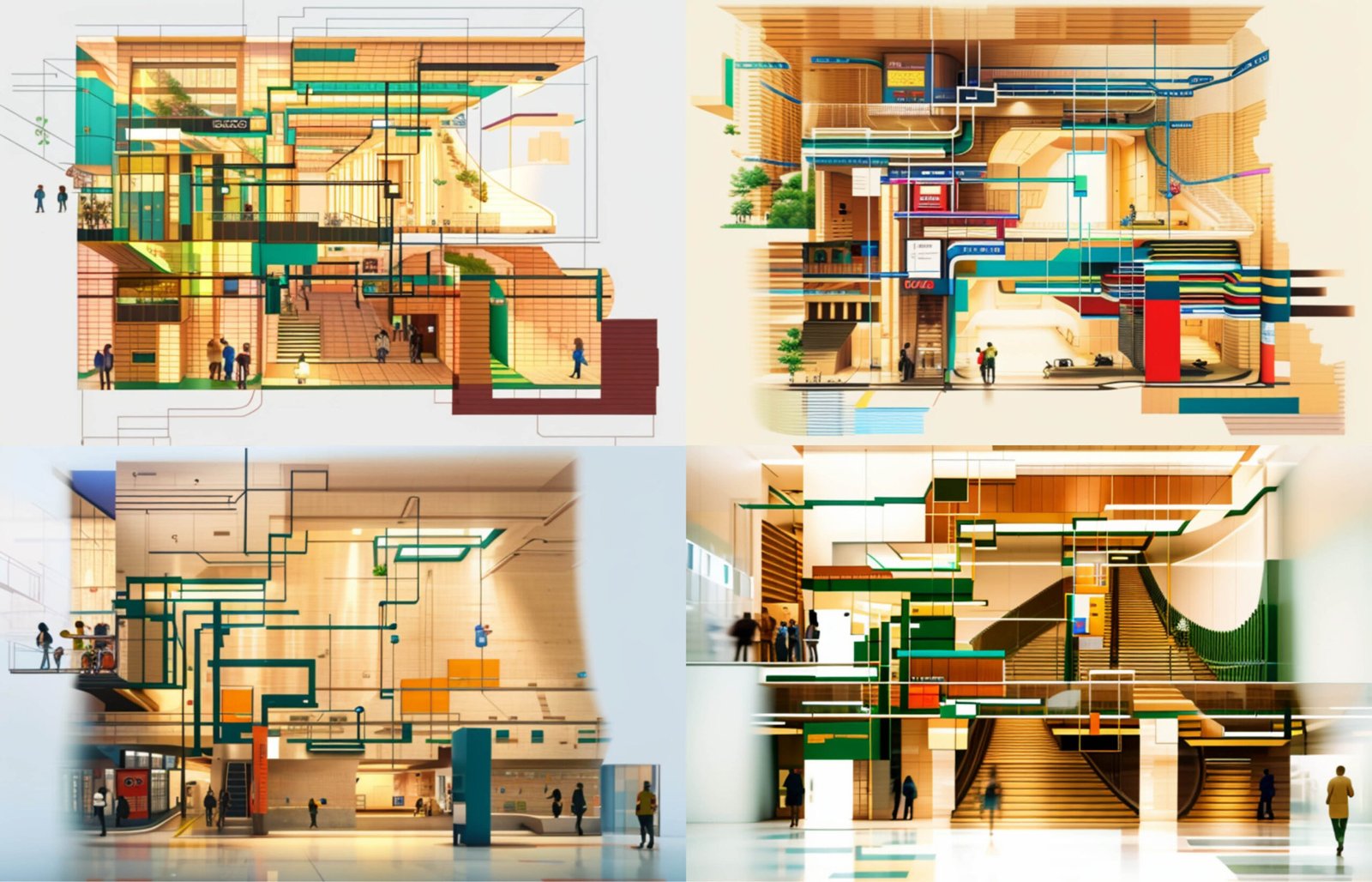

That sounds like a fun experience!
Eric Yu: I like to find simple words that are easy to understand. So AI, for me, is big data.
Yes, it’s definitely evolving, how it keeps progressing.
Eric Yu: Yeah, like iPhones! Every year there’s a new version—iPhone 14, iPhone 15—it just keeps advancing. And AI, like big data, is about collecting the entire world’s data. So, yeah, I think it’s very powerful.
Tsung Yen Hsieh: Exactly. We had an interview with the chief of a government organization that creates courses for municipal officers, and he said something really interesting. He said that AI would replace everything one day, maybe everything.
Above: RED ElevaTor by Atelier SUPERB, an accessible elevator for a local tax office in Yuanlin City, Taiwan. Below: Reclaimed Archeoscape, a public installation by Atelier SUPERB. Images courtesy of Eric Yu.
Everything?
Tsung Yen Hsieh: Yeah, everything. But then he talked about something that tied into this idea—he mentioned Einstein: “This reminded me of Einstein’s later years. After spending a lifetime proving rational theories, he began contemplating deeper philosophical and even spiritual questions.” After spending his whole life trying to prove rational scientific theories, this legendary scientist started to think about God’s existence in his later years. So even with all the data and science we have, there’s still this mystery, like religion or spirituality, that can’t be explained by AI or big data.
Eric Yu: That sounds like he’s saying AI is part of a bigger process, almost like we’re creating a god-like entity.
Tsung Yen Hsieh: Exactly. Even though AI and big data could contain everything about the human mind, there’s still an element of the unknown. That’s something we can’t fully grasp with science. Being from the government, he started talking about these profound spiritual ideas, which was really unexpected. We thought all his comments would be very rational and scientific, but instead, he was discussing the unknown.
Wei-Jhe Lin: It was really fascinating, especially because we expected the conversation to be strictly scientific, but it ended up being more philosophical than we anticipated.
Tsung Yen Hsieh: He also talked about this idea of parallel spaces. He shared this story: one day, while driving, he looked at the GPS monitor on his iPhone and realized that it’s like there are two worlds at play: the real world and the virtual world. The GPS shows a small arrow moving in real-time, guiding you somewhere. But as the driver, you’re physically going somewhere else. In that sense, the real world and the virtual world are connected, even though they are not the same.
Eric Yu: Yeah, and he related that back to AI. He said AI is like that virtual world, creating a parallel space connecting with the real world. Even though we trust AI to guide us, it’s ultimately up to us humans to navigate and make decisions. So, while AI provides a route, the human makes the final choice, even when you deviate from the path.
Tsung Yen Hsieh: In the end, the destination is still your choice.
That’s a fantastic way to wrap up the interview. Thank you, everyone. •
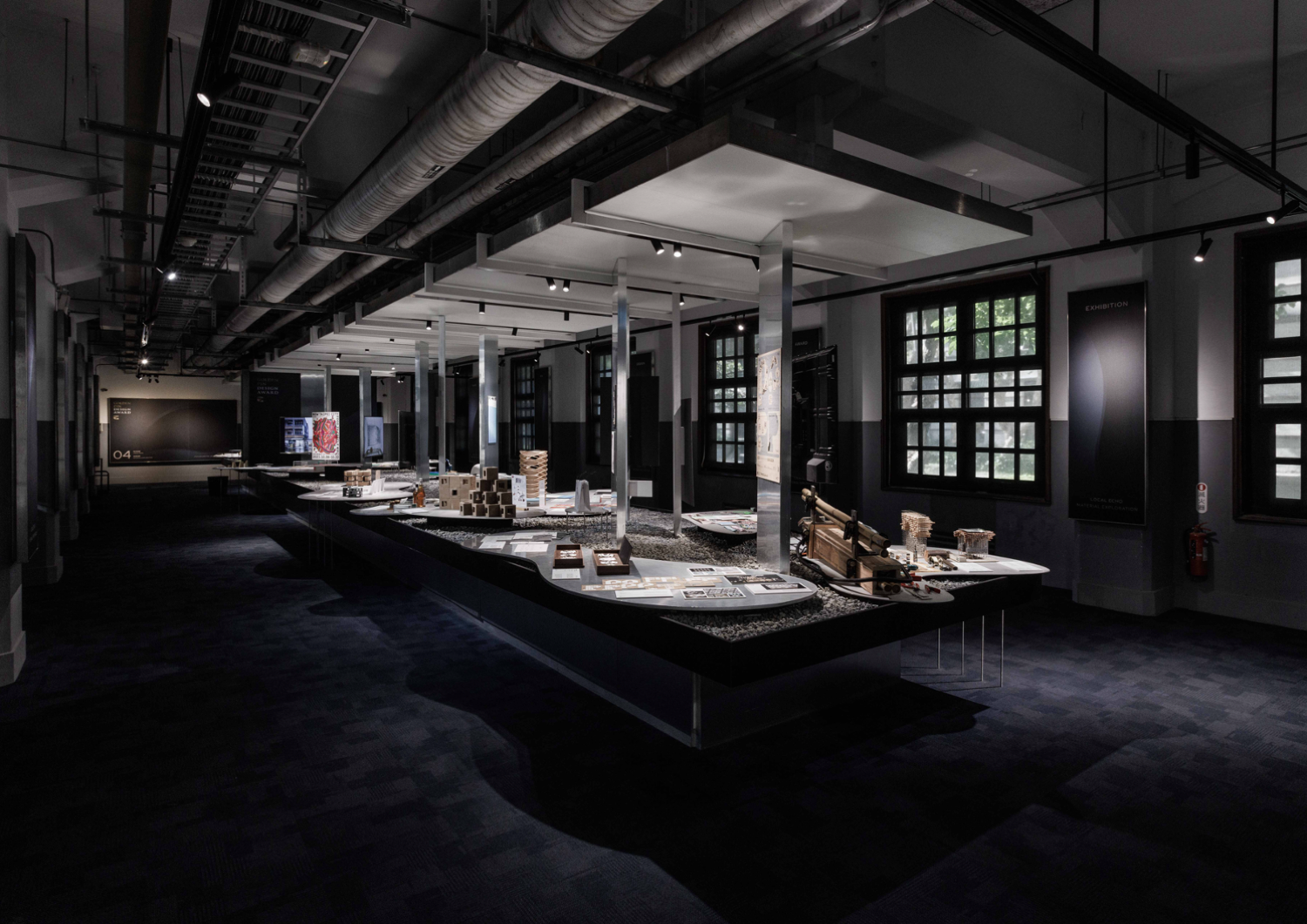

Taiwan Design Week 2024’s “The Gateway” exhibition ran from December 7, 2024, to February 2, 2025. This interview was made possible by the Taiwan Design Research Institute (TDRI). For more information, visit TDRI or follow @designintaiwan on Instagram.

